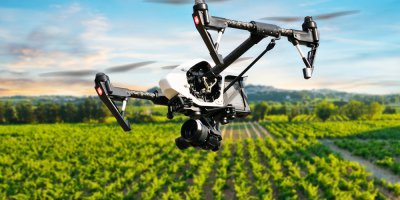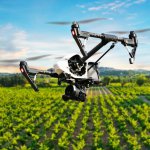
Sustainability in the agri-food industry requires innovative technology. Source: Shutterstock
The agri-food system as we know it is not, and will never be good enough
ASIA’S population is booming and its cities are expected to be home to 578 million people by 2030.
This burgeoning growth in population will lead to an increased demand for food. Eventually, traditional food systems and farming practices will be strained and unable to keep up.
Needless to say, there is an urgent need to come up with improved food and agricultural solutions to meet these rapidly shifting demands. The answer to this lies within innovative technology.
The technology deployed will have to be able to increase yields and at the same time, reduce the environmental impact of farming and food waste. Also, it should be able to improve food safety, traceability, and distribution, to increasingly urban settings.
Thus far, innovative technology has served the agri-food industry well.
Some noteworthy innovations so far include alternative meat-based proteins and aquaculture that can significantly reduce fish mortality, and at the same time improve output. This is especially important for small scale farmers whose livelihood almost always depends solely on aquafarming.
Sadly, Asia is still not keeping up in terms of investing in technology for the agri-food sector.
It lags behind regions such as North America and Western Europe. This is partially due to the diversity of the countries, and the different levels of economic development and regulatory systems.
To address this, greater collaboration between public and private sectors must be fostered. To begin with, there must be a shared sense of responsibility and urgency across the region.
Governments can encourage these collaborations through policies and legislations that would make venturing into new agri-tech and innovations enticing. Corporate venture capital teams, as well as incubators, should also be established to help start-ups navigate the agri-tech industry.
Temasek Agribusiness MD Anuj Maheshwari recently noted that “a fundamental change is required across the entire food supply landscape […] there are immense opportunities for businesses and governments to work together in creating innovative agri-food solutions”.
Cities that have successfully established innovation hubs have a few traits in common. For one, there is always a positive regulatory environment to encourage startups, investments, and talent to venture into the industry.
For example, Singapore has already put in place initiatives to develop itself into an agri-food innovation hub, and has set a goal to produce 30 percent of the country’s nutritional needs by adopting new-age solutions.
As mentioned, Asia is urbanizing rapidly, and by 2030, there will be millions of people who will be expecting healthy food that is sustainably and ethically sourced.
For Asia to grow its agri-food industry into a sustainable size over the next 10 years, it is estimated that a cumulative investment of another US$800 billion will be needed.
The majority of these investments will go into improving sustainability, safety, health, and convenience. The rest will be used to explore ways to increase the quantity of food produced.
Ultimately, the problem of food sustainability is very real in Asia. It is a pressing matter and needs action.
Both government organizations and business owners must take up the responsibility to look into this issue, and invest in technologies that will improve the sustainability of the agri-food industry.
READ MORE
- The criticality of endpoint management in cybersecurity and operations
- Ethical AI: The renewed importance of safeguarding data and customer privacy in Generative AI applications
- How Japan balances AI-driven opportunities with cybersecurity needs
- Deploying SASE: Benchmarking your approach
- Insurance everywhere all at once: the digital transformation of the APAC insurance industry


